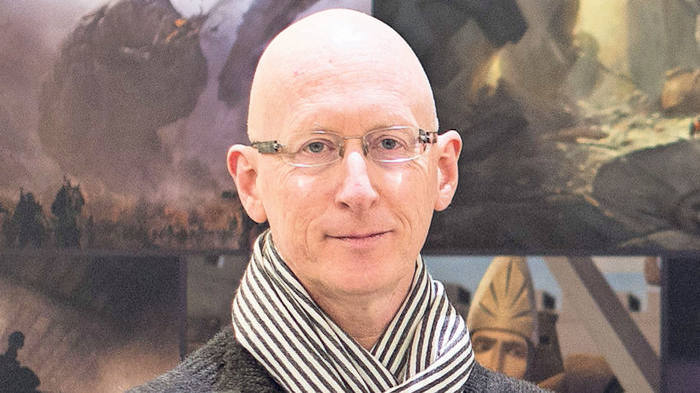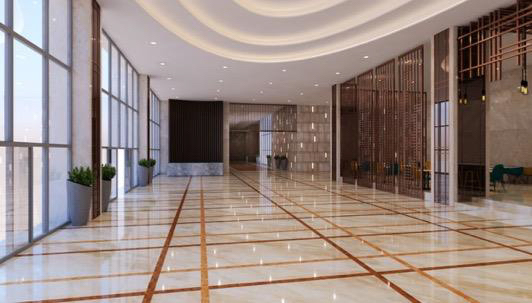
Having long been hailed as the film-city where dozens of movies are shot and released every year, Mumbai is the center and birthplace of multi-million dollar Indian film industry. In addition to that, majority of Indian films and series are also given face-lifts in Mumbai-based VFX studios. India has witnessed a paradigm shift in video consumption with the advent of digital platforms making inroads in the content industry. With the burgeoning demand for differentiated, global and VFX-rich content that can travel outwards, its interesting to note that many international VFX companies have set up outposts in the Indian subcontinent too.
Recent entrant in the list of global VFX studios in Mumbai is Framestore that recently announced their plans to build on its Indian presence with the opening of its branch in the hub of the land of Bollywood. Drawing on India’s growing creative talent pool. Framestore is all set to open its doors in Mumbai in 2020 as a full digital production facility. Framestore founder and CEO Sir William Sargent spoke to AnimationXpress about his future plans.
Excerpts
What brought on the idea of bringing Framestore to Mumbai?
Demand for Framestore’s work has led to increased growth across our various locations – our Montreal office alone has doubled in size over the past two years. We’ve had a presence in India since 2017, and Mumbai feels like a logical progression – the talent pool is fantastic, and the city’s rich creative culture seems to chime with Framestore’s own outlook.
What sets Framestore apart from other VFX services?
Broadly speaking, I think Framestore represents an intersection of creativity, technology and innovation. This is built on – and stems from – a company culture that feeds and rewards excellence, from training and development opportunities through to an environment that encourages curiosity and left-of-centre solutions to film-making challenges.
Would you also be targeting television programmes that are increasingly making VFX a part of their storytelling?
For the time-being at least the majority of our film clients are likely to be north American, as Hollywood continues to drive demand for our work. The new and emerging VOD services do represent an enormous change, however, and the boom in episodic work is extremely exciting. While there’s significant crossover in terms of the writing, acting and directorial talent involved, the scope to expand universes and really dig into storylines is significant. This obviously means there’s tremendous scope for companies like Framestore, as seen with a TV show like His Dark Materials which required some 2,000 shots of film-quality VFX work. Beyond film and TV, we have worked with a number of Chinese clients in the immersive sector – notably ‘Pearl Quest’, a dark ride project for China’s Wanda Group and, most recently, in creating five state-of-the-art attractions for the Lionsgate Entertainment World theme park in Zhuhai Hengqin.

Any plans of servicing non-Hollywood markets like Indian movies and local content?
Our work is driven by the needs and demands of our clients. We don’t have any Indian projects on our cards at the moment, but when you look at the partnerships our clients are currently inking with Indian producers that could well change in the future.
What projects are in the pipeline?
We have wide and varied slate of film and TV projects at the moment, from live-action updates of Disney classics and superhero features, to thrillers and horror titles. We also work across advertising and immersive entertainment (which encompasses VR, MR, AR and theme park rides), so it’s a huge melting pot of exciting, challenging projects.
Recent and upcoming films
Tom & Jerry (Warner Bros.); Mulan (Disney); Wonder Woman 1984 (Warner Bros.); Timmy Failure (Disney+); No Time To Die (Eon)’ The King’s Man (20th Century Fox); The Aeronauts (Amazon Studios); The Voyage Of Doctor Dolittle (Universal); Artemis Fowl (Disney); The Secret Garden (STUDIOCANAL); A Boy Called Christmas (Netflix/Studiocanal); The Suicide Squad (Warner Bros.); Army Of The Dead (Netflix)
Recent and upcoming episodic titles
His Dark Materials (BBC/HBO); The Witcher (Netflix); See (Apple TV+); The Crown (Netflix); A Christmas Carol (BBC); The Marvellous Mrs Maisel (Amazon); Watchmen (HBO).
Any projects that you have been approached for?
We’ve got some incredibly exciting projects on the cards, but unfortunately we’re not allowed to talk about them just now.
Would you say that filmmakers in the current times are progressively coming around to the importance of VFX?
It’s definitely being seen as a fundamental part of the film-making process nowadays. When people think of VFX they might typically think of superhero films, sci-fi epics and fantasy titles, but our work goes far beyond this. We’ve provided ‘invisible FX’ for films like Downton Abbey, while a film like The Aeronauts – a period adventure film where most of the action takes place in a hot air balloon – relied heavily on photorealistic CG environments.
Topics like digital humans, AI and de-aging are also coming more and more to the fore, and being utilised by directors across the film-making spectrum.
Lastly, what advice would you give to the aspirants and budding VFX artists who would like to work with your studio?
On a practical level, it’s important to have a great showreel – one that demonstrates your talent and the breadth of your work, but also passion and flair for a particular department or specialism. Equally important for us, however, is outlook and ethos. It’s important to be creative and technically excellent, but we also want great communicators and great collaborators who are hungry to learn, develop and share what they know with their colleagues.

